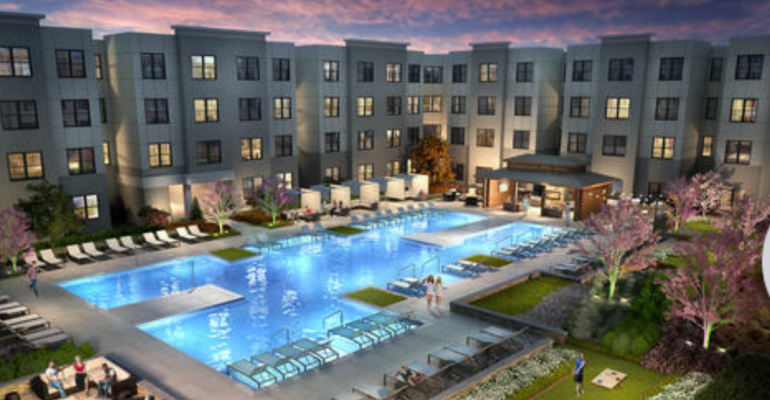Despite high prices and worries about overbuilding in some markets, investors keep pouring money into student housing.
“We’ve had a record number of offers on our listings so far this year,” says Jaclyn Fitts is the director of CBRE's national student housing service. “We are definitely still seeing exuberance.”
Investors are likely to spend at least as much to buy student housing properties in 2018 as they did last year. The billions they spend on student housing this year may even match the peak year of 2016. Student housing is attractive in part because, even when the U.S. economy eventually slows down, demand for student housing typically increases in recessions as more people enroll at universities. In the meantime, student housing provides steady income and diversification for investor portfolios.
“Student housing remains the hottest sector in the real estate industry because of its recession resiliency,” says J. Ryan Lang, executive managing director in the Austin, Texas, offices of ARA Newmark Student Housing.
Billions of deals closed in the first half of 2018
Investors are likely to spend more than $10 billion on student housing properties in the U.S. in 2018, according to CBRE. That’s up steeply from just $8 billion in 2017. It would also match the peak year of 2016, when investors spent $10 billion on student housing properties.
The deals in 2018 already include $3 billion in transactions that closed in the first half of the year, according to CBRE. Other experts put the total slightly higher. Brokerage ARA counts a total of $4 billion in student housing transactions, up from $3.9 billion in the first half of 2017.
“Sustained pursuit of the asset class has led to record transaction volume through the second quarter of 2018,” says ARA’s Lang.
The second half of the will almost certainly be much busier—including the months the start of the school year. “Transaction volume in the second half of the year is going to substantial… much more than in the first half,” says Fitts.
The volume of deals is likely to be boosted this fall by the $4 billion purchase of REIT EdR by Greystar. But the real energy in the market for student housing is coming from smaller deals. “There are a lot less portfolio transactions compared to the last two years... There’s been a pick up in individual transactions,” says Fitts.
New buyers take over from international investors
Foreign buyers spent a lot less in the first half of this year than they did last year to buy large portfolios of student housing properties. Internationals only accounted for 23 percent of dollars spent on student housing properties this this period, according to CBRE. That’s down steeply from 40.4 percent in 2017.
However, other buyers have stepped up to replace the dollars that international investors used to spend on student housing—keeping the overall total of dollars spent on student housing high.
Also, the drop in foreign investment may be just a temporary pause. “The international capital that has bought properties has been focused on integrating their properties,” says Fitts.
The long-term trend has brought new buyers and more capital to student housing in recent years. “We’ve seen more new equity groups and foreign capital flocking to the space for diversification purposes,” says ARA’s Lang. “The amount of institutional and foreign money actively pursuing the asset class is driving competition and, therefore, pricing to new heights.”
Prices continue to rise for student housing properties—even relative to multifamily properties overall. Cap rates are still very low, and the spread between the cap rates on pedestrian student housing properties and mid-rise and high-rise multifamily properties is now just 25 basis points, according to CBRE. “That’s the lowest it has ever been,” says Fitts.
Investors have historically demanded higher yields—and lower prices—for student housing properties compared to apartment properties overall. In 2013 the spread between the cap rates on pedestrian student housing properties and mid-rise and high-rise multifamily properties was 109 basis points, according to CBRE.
“Now that yield has eroded and a lot of people are seeking student housing as an alternative investment and to have diversification in their investments,” says Fitts.




